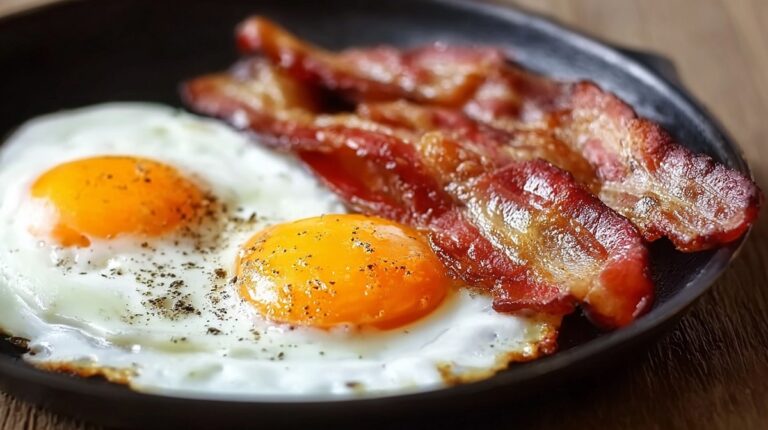Eggs are the ultimate kitchen hero. They work in scrambles, stir-fries, and casseroles, making them ideal for busy cooks. Whether it’s morning, noon, or night, these protein-packed powerhouses turn basic ingredients into complete meals quickly.
No need for complicated techniques or rare ingredients. Most recipes here use pantry staples and take under 30 minutes. Think fluffy omelets for breakfast, hearty salads for lunch, and savory frittatas for dinner – all built around affordable, nutrient-rich eggs.
Beyond speed and simplicity, eggs deliver serious nutrition. Each serving packs vitamins, minerals, and high-quality protein to keep energy steady. They’re also endlessly adaptable for gluten-free, low-carb, or vegetarian diets.
The Versatile Nature of Eggs
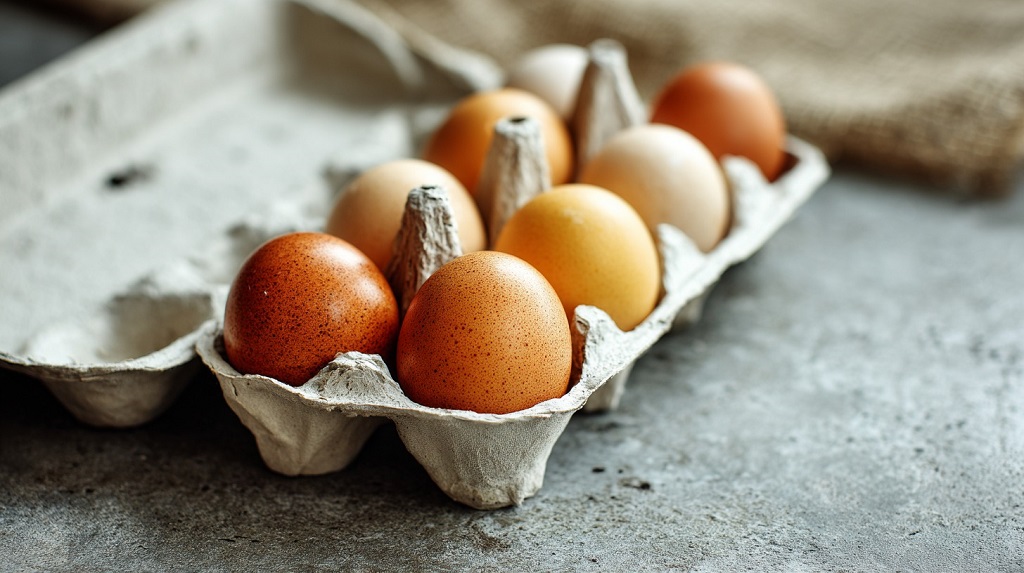
No ingredient bridges breakfast and dinner like the humble egg. Its ability to transform textures and flavors makes it indispensable in global cuisines. Whether acting as the star of a meal or supporting other ingredients, eggs bind, thicken, and enrich countless recipes.
“An egg demands respect – overcook by seconds, and you lose its magic,”
Mastering techniques like custard-making or soufflé-whipping involves precise temperature control and timing.
Nutritionally, eggs punch above their weight class:
- 6 grams of complete protein per large egg
- 14 essential nutrients including choline for brain health
- Antioxidants lutein and zeaxanthin for eye protection
Economically, they outperform meat proteins. At roughly $0.25 each, eggs provide more nutrients per penny than chicken or beef. This cost efficiency explains their presence in 94% of American fridges according to USDA data.
From French pastry creams to Japanese tamagoyaki rolls, eggs adapt to any culinary tradition. Their neutral flavor acts as a canvas for spices, cheeses, and herbs – proof that simplicity breeds endless possibility.
Mastering Egg Cooking Techniques
Cracking the code to perfect egg preparations requires understanding heat dynamics. Different methods demand specific temperature controls and timing precision to achieve desired textures.
Frying, Scrambling, and Poaching Essentials
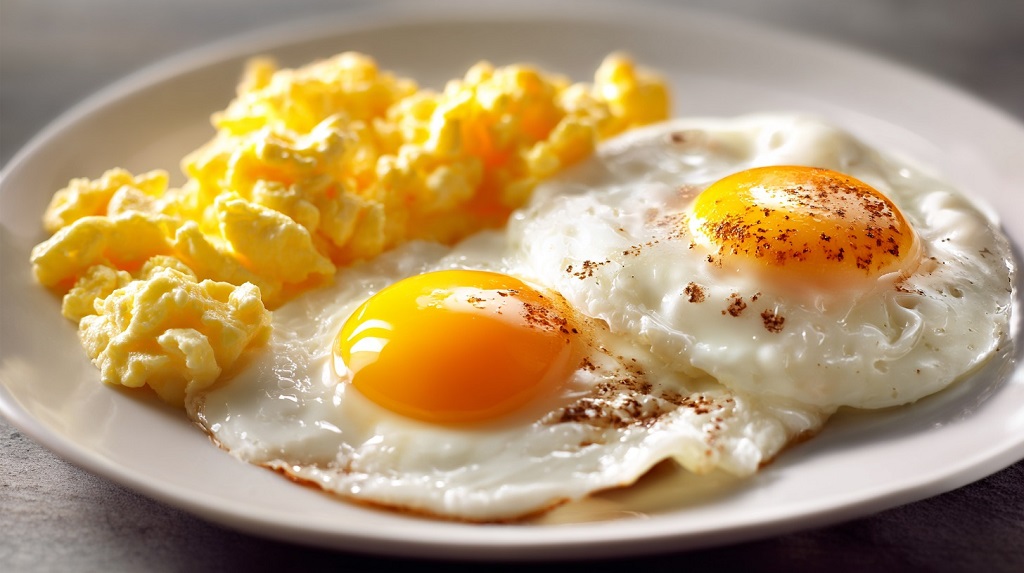
Sunny-side up eggs thrive at medium heat. Wait until edges turn golden and whites fully set – about 3 minutes. For crispy fried versions, crank the burner to medium-high with 1 tbsp oil. The sizzle creates lacy browned edges without hardening yolks.
Soft scrambled eggs need patience. Start in a cold pan, stirring constantly over low heat. Remove from burner every 30 seconds to prevent overcooking. French-style versions finish creamy rather than fluffy.
Poaching becomes foolproof with two tricks: use eggs chilled in their shells and water at 190°F. Swirl the water before adding drained eggs. Cook 4 minutes for runny centers.
Tips for Perfect Soft-Boiled and French Omelettes
Six minutes in simmering water yields soft-boiled eggs with firm whites and molten yolks. Shock them in ice water immediately to stop cooking. Peel gently under running water.
French omelettes require medium-low heat and constant motion. Tilt the pan while stirring to create small curds. Fold the delicate sheet into thirds when still slightly wet – residual heat finishes the job.
Common mistakes include overcrowding pans and using high heat. Nonstick skillets work best for delicate preparations. Always crack eggs into separate bowls before cooking to check freshness.
Dishes with Eggs for a Protein-Packed Breakfast
Morning meals set the tone for the day, and nothing fuels them better than simple, nutrient-dense preparations. These foundational techniques deliver both comfort and energy while keeping cooking times under 10 minutes.
Classic Scrambled and Fried Egg Variations
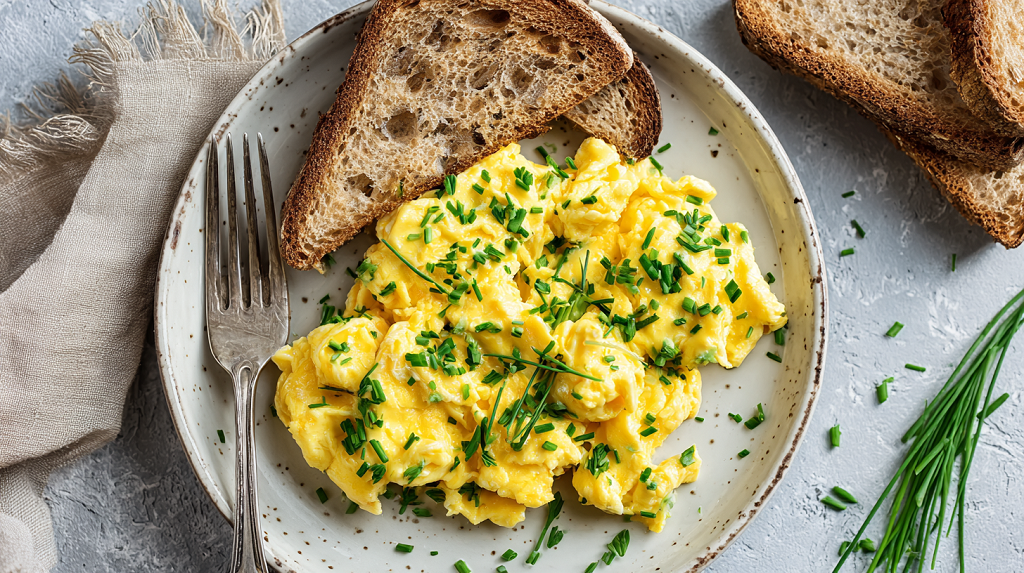
For fluffy scrambled eggs, pre-salt beaten eggs and cook over medium-high heat. Stir minimally to create large, tender curds. Want crispiness? Try the Chinese tomato scramble: toss chunks with Shaoxing wine and ginger before folding into eggs.
Crispy fried eggs shine with a hot skillet and oil basting. Let edges bubble until golden while keeping yolks runny. Pair with toast or mix into rice bowls for added texture.
Global twists expand possibilities:
- Add feta and dill to soft scrambles
- Top fried versions with chili crisp or kimchi
- Layer scrambled curds into breakfast tacos
Each large egg packs 6 grams of protein, making two-egg servings ideal for active mornings. For protein-packed breakfast ideas, prep ingredients like chopped veggies or cooked meats the night before. This streamlines morning cooking without sacrificing nutrition.
Innovative Egg Recipes for Lunch and Brunch
Brunch becomes an art form when eggs take center stage. These midday meals balance elegance with practicality, transforming basic ingredients into restaurant-worthy plates. Perfect for lazy weekends or hosting friends, these creations prove eggs aren’t just for sunrise meals.
Baked Eggs, Sandwiches, and Open-Faced Creations
Sheet pan baked eggs with grape tomatoes and feta simplify group meals. Roast tomatoes at 400°F until blistered, crack eggs between them, and finish with crumbled cheese. Ready in 20 minutes, this recipe serves four with minimal cleanup.
Crispy sourdough tartines elevate open-faced sandwiches. Spread herbed ricotta on toasted bread, layer roasted asparagus, then crown with a fried egg. Each serving delivers 28g protein – ideal for post-workout recovery.
Jammy egg toasts redefine quick lunches. Simmer eggs for 7 minutes, then peel and slice over rustic bread. Drizzle with shallot vinaigrette and chili flakes. The whole recipe takes minutes but tastes like café fare.
Three ways to adapt these recipes:
- Swap asparagus for zucchini in summer tartines
- Use goat cheese instead of feta for creamier baked eggs
- Top toasts with smoked salmon for special occasions
Artisanal bread bases like ciabatta or rye add texture contrasts. For gatherings, arrange toppings separately and let guests build their own creations. These dishes work equally well for solo lunches or festive brunches.
Simple, Hearty Egg Dinners
Weeknight dinners demand speed without sacrificing satisfaction. One-pan solutions and oven-baked casseroles turn basic ingredients into complete meals faster than takeout apps load. Families appreciate recipes that repurpose leftovers while delivering fresh flavors.
One-Pan Wonders and Quick Casseroles
These three crowd-pleasers prove fast dinners don’t require compromise. Each balances protein, veggies, and carbs in a single vessel:
| Recipe | Key Ingredients | Cook Time | Servings |
|---|---|---|---|
| Speedy Fried Rice | Day-old rice, veggies, eggs | 25 minutes | 4 |
| Hearty Skillet | Potatoes, steak, eggs, tomatoes | 30 minutes | 3-4 |
| Veggie Casserole | Mixed vegetables, cheese, eggs | 35 minutes | 6 |
The fried rice recipe shines with leftover grains. Sauté vegetables first, then toss in rice and beaten eggs. Finish with soy sauce and sesame oil for restaurant-quality results.
Casseroles offer ultimate flexibility. Combine whisked eggs with roasted veggies and cheese, then bake until golden. For lazy dinner solutions, assemble ingredients in the morning and refrigerate until baking time.
Skillet meals transform last night’s steak into something new. Sizzle potatoes until crisp, add meat and tomatoes, then crack eggs into pockets. Cover until whites set – dinner’s ready in 30 minutes flat.
International Egg Recipes: Global Inspirations
Global kitchens reveal eggs’ true versatility through centuries-old recipes. Cultures worldwide transform this ingredient into signature meals using local spices, cooking methods, and presentation styles.
Shakshuka, Oyakodon, and Menemen Delights
North African shakshuka simmers eggs in a zesty tomato sauce with bell peppers and onions. Cumin and paprika add warmth, while fresh herbs balance the richness. Serve with crusty bread for dipping.
Japan’s oyakodon combines tender chicken and softly set eggs in a sweet-savory broth. Mirin and dashi create depth, while scallions add freshness. It’s traditionally ladled over steaming rice.
Turkish menemen scrambles eggs with Aleppo peppers and juicy tomatoes. Cooked slowly in olive oil, it develops a silky texture. Pair with tangy yogurt and flatbread for contrast.
Exploring Tamagoyaki and Other Asian Styles
Tamagoyaki showcases Japanese precision. Thin omelette layers roll into a sweet-logged cylinder using a rectangular pan. Dashi and sugar create its signature delicate flavor.
Other regional specialties include:
| Dish | Origin | Key Ingredients | Cook Time |
|---|---|---|---|
| Shakshuka | Tunisia | Tomatoes, peppers, cumin | 25 mins |
| Oyakodon | Japan | Chicken, dashi, onions | 20 mins |
| Menemen | Turkey | Peppers, tomatoes, olive oil | 15 mins |
| Tamagoyaki | Japan | Dashi, soy sauce, sugar | 10 mins |
Substitute Aleppo peppers with crushed red pepper for menemen. Use vegetable broth instead of dashi for vegetarian tamagoyaki. These adaptations maintain authentic flavors while using accessible ingredients.
Indulgent Egg-Based Sandwiches and Toasts
Golden yolks oozing over toasted bread create breakfast magic worth waking up for. These handheld meals transform basic ingredients into crave-worthy combinations that satisfy morning hunger and late-night cravings alike.
Egg McMuffin Clones
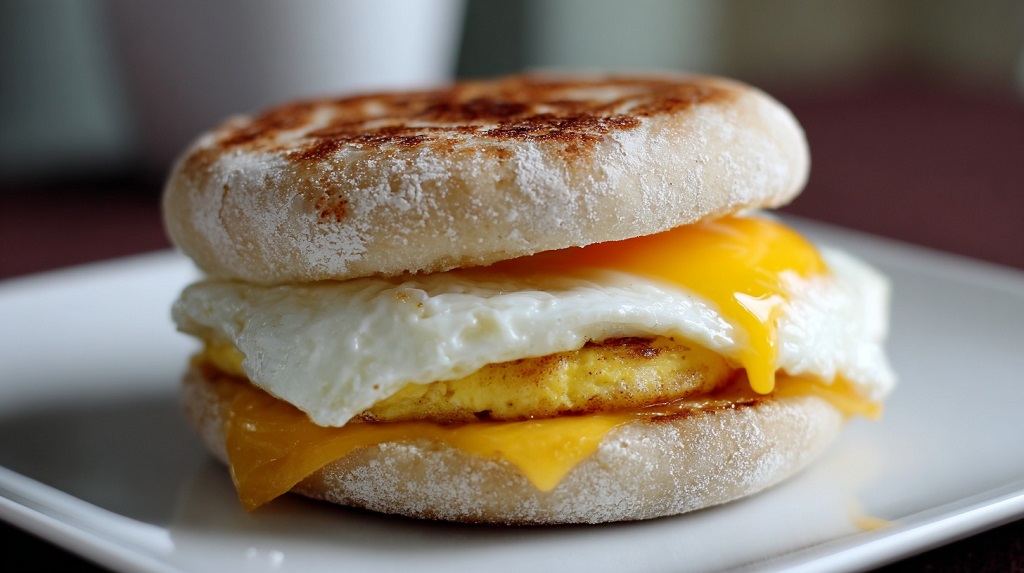
Recreate the fast-food classic with better ingredients. Use a Mason jar lid as a mold: crack an egg into the greased ring set in a skillet, cover, and steam for 2 minutes. Layer the round egg on a toasted English muffin with Canadian bacon and melted American cheese.
Grilled Cheese Eggsplosions
Butter two bread slices, cut holes in their centers, and place in a skillet. Crack eggs into the holes, then top with cheddar or jack cheese. Once set, flip one slice onto the other for a cheese-pull masterpiece.
| Recipe | Key Feature | Cook Time | Servings |
|---|---|---|---|
| McMuffin Clone | Steamed egg shape | 12 mins | 1 |
| Eggsplosion | Double cheese layers | 15 mins | 2 |
| Bodega-Style | Basketweave bacon | 20 mins | 2 |
For deli-inspired bacon sandwiches, weave four strips into a square grid before frying. Pile scrambled eggs and sharp cheddar on a toasted roll. The bacon lattice prevents slippage while adding crunch.
Choose sturdy breads like sourdough or ciabatta to handle juicy fillings. Melt cheeses fully before assembling – microwave components briefly if needed. These sandwiches work for breakfast meetings or weekend brunch spreads.
Crispy Egg-Focused Pasta and Rice Creations
Transform pantry staples into gourmet meals using eggs’ unique binding and saucing abilities. Authentic carbonara skips cream entirely – whisked yolks and Pecorino Romano blend with hot pasta to create silky richness. Toss crispy guanciale and black pepper into spaghetti for Rome-approved flavor.
Sunny-side-up versions shine in minimalist recipes. Top al dente noodles with fried golden-edged options, then stir vigorously. Runny yolks coat strands like velvety sauce – add Parmesan and chili flakes for depth. This 10-minute meal proves luxury needs no elaborate ingredients.
Leftover rice gets new life through sizzling skillet techniques. Scramble beaten mixture into wok-fried grains with veggies and protein. High heat creates coveted charred bits while binding components. Serve with soy sauce drizzle for takeout-quality results in 25 minutes flat.
These methods highlight eggs’ dual role as star and support. From creamy emulsifier to crispy textural element, they elevate humble carbs into craveable main courses without fuss.
FAQ
How long does it take to prepare baked eggs with vegetables?
Most baked egg recipes take 20–25 minutes at 375°F. Adding veggies like tomatoes or peppers may require pre-roasting for 5–10 minutes. Cheese or crumbled sausage can be layered for extra flavor.
What’s the secret to fluffy scrambled eggs?
Whisking eggs vigorously with a splash of milk or cream creates air pockets. Cooking them low and slow in butter ensures a creamy texture. Avoid overcooking to keep them tender.
Can egg-based dishes like quiche be made ahead for brunch?
Yes. Quiche crusts can be pre-baked, and fillings prepped a day in advance. Assemble and refrigerate overnight, then bake fresh. Leftovers stay flavorful for up to three days.
Are fried eggs suitable for high-protein meal prep?
Fried eggs provide 6g of protein each. Pair them with avocado toast or roasted potatoes for balanced meals. Use olive oil instead of butter for a healthier option.
How do restaurants like Starbucks achieve runny poached eggs?
Fresh eggs and a vinegar-water simmer are key. Swirl the water gently before adding the egg to create a tight shape. Cook for 3–4 minutes for a liquid yolk.
What’s a quick egg dinner using leftover ingredients?
Sauté onions, peppers, and diced potatoes in a skillet. Pour whisked eggs over the mix, top with cheddar, and bake for 15 minutes. Serve with salsa or hot sauce.
Is feta cheese a good addition to Mediterranean-style egg recipes?
Crumbled feta adds tanginess to shakshuka or menemen. Its salty flavor pairs well with tomatoes and spinach. Opt for authentic Greek brands like Dodoni for best results.
Can egg sandwiches be frozen for later use?
Cooked eggs freeze well in airtight containers. Reheat frozen breakfast sandwiches (like McDonald’s Egg McMuffin clones) in a toaster oven for 8–10 minutes to retain texture.
What spices elevate spicy egg dishes like shakshuka?
Cumin, smoked paprika, and harissa paste add depth. Garnish with fresh cilantro or parsley. For heat, drizzle sriracha or add sliced jalapeños before baking.
How do Asian recipes like tamagoyaki achieve a sweet-savory balance?
Tamagoyaki uses mirin, soy sauce, and sugar in the egg mixture. Cook in thin layers using a rectangular pan, rolling each layer tightly for a signature spiral.

